|
I used to hate gin and tonics. "Bitter, bitter pine trees" I called it (incidentally, somebody please make that their band name). But while plain dry gin and regular tonic are still not my thing, I've become a much bigger fan of gin than I originally thought. In particular, flavored gins, which are so easy to make at home! Rhubarb is a favorite in Northern Europe and Scandinavia is no exception. But ultimately rhubarb reminds me of growing up in North Dakota! Also known as "pie plant," the only safe part of the rhubarb plant for humans to eat is the stalk. It gets its sourness from oxalic acid, which is concentrated in the leaves, making them inedible and toxic. But its tartness is part of its charm, as rhubarb is often one of the earliest "fruits" available after winter. Although rhubarb is done for the season in much of the United States by July, I was able to rescue some stalks from my mother-in-law's house before they got too dry. June was a busy month for me, so I didn't have much time to turn them into desserts. Gin it was! Rhubarb Gin & TonicThis recipe is pretty straightforward, and makes the most delicious, rhubarb-y gin! 10-16 rhubarb stalks sugar to coat dry gin tonic water Cut the rhubarb lengthwise into long strips, then cut crosswise into small pieces. Essentially, you want it minced. Add it to a quart jar (about 3 cups) and add sugar to coat, a 1/4 to a half cup. Seal and shake vigorously and let rest at room temperature, shaking occasionally, until the rhubarb gives up its juice. After 12-24 hours, cover with dry gin (I used the tail end of a bottle of Beefeater). Shake well and let rest at room temperature, shaking occasionally, for a day or two before using. The pinker your rhubarb, the pinker the gin. Eventually, the minced rhubarb will lose its color, but it will still taste delicious. To make the beautiful pink gin into a tonic, pour a finger or two over ice, fill with tonic water, and stir to chill and combine. You don't have to use particularly high-quality gin - the sugar smooths out a lot of the alcoholic burn. But try to use a higher quality tonic than the garden variety. I like Fever Tree. Use the plain tonic for full rhubarb flavor. But if you're feeling extra fancy and adventurous, try it with their Elderflower tonic! The flavor of the rhubarb and the elderflower merge to give almost a grapefruit-y taste. I like both ways! Purchases from affiliate links will give The Food Historian a small commission. Infusing alcohol is one of my favorite ways to "preserve" fruit, and gin is one of the most forgiving. You can make blackberry gin, raspberry gin, and even celery gin! Just add fruit, a little sugar if you want, and let it rest until the gin takes on the color and flavor of whatever you're putting in it. This is the last post in my Scandinavian Midsummer Porch Party series. I hope you enjoyed it! Follow the link to see the whole menu. The Food Historian blog is supported by patrons on Patreon! Patrons help keep blog posts like this one free and available to the public. Join us for awesome members-only content like free digitized cookbooks from my personal collection, e-newsletter, and even snail mail from time to time! Don't like Patreon? Leave a tip!
0 Comments
Every good party has at least two beverage options for guests. I like to have one alcoholic, and one non-alcoholic. When I was planning my Scandinavian Midsummer Porch Party, I knew I wanted something light and refreshing for the non-alcoholic option. Scandinavians aren't really known for this, but saft is a non-alcoholic fruit juice concentrate that often finds its way onto Scandinavian tables. Saft means "juice" and is a sugar-sweetened concentrate meant to be mixed with water. In a lot of households, water and the concentrate are placed on the table separately, and guests mix their own beverages to taste. Saft isn't quite a syrup. Legally, it must contain at least 9% fruit juice. But it's certainly not unsweetened. Historically, the sugar likely acted as a preservative, allowing people to have fruity drinks year-round and preserve some of the summer abundance for the lean times in winter. Access to vitamin C may have also played a role in the creation of saft. Analogs in the United States might be shrub (although that is often made with vinegar) and British cordial (although that is sometimes fortified by alcohol). If you've even been to IKEA and had the lingonberry "juice" at the café, you've had saft. Common flavors include strawberry, blackberry, blackcurrant, lingonberry, and elderflower. ElderFLOWER? Yep! Elderflower! Elder plants are common in Europe and have been revered in many ancient cultures for their magical and protective powers. You may have heard that elderberry syrup can be use as an immune booster. But elderflowers were also eaten in early summer. Fried as fritters, made into saft and cordials, steeped in alcohol, and eaten with fish, their strong floral scent has an affinity for honey, lemon, and gooseberries. Although elders grow with abundance in Europe, they're a bit more scarce here in the United States. So I did not make my own elderflower syrup, but if you've got access and care to take a stab, here's a recipe to try. If you also live in an area that's short on elder bushes and trees, you can purchase syrups online or from your local IKEA or Scandinavian shop. I got Monin brand syrup, which was good (I like all their syrups), but not as good as the "real" Swedish saft, which is hard to find online. Hafi brand elderflower drink concentrate is what to Google, and Hafi is a Swedish preserves brand that has been around since the 1930s. You can find it in some specialty foods stores, too. Elderflower PunchThis elderflower punch is delicious, but it has a unique flavor. Some of my party-goers thought it tasted like Pez! I think it's a nice combination and refreshing, but see for yourself. elderflower syrup plain seltzer or club soda ginger ale In each glass, add about an inch of syrup, then fill halfway with plain seltzer, top off with ginger ale, and give it a good stir to combine the syrup. You can also do it with all plain seltzer, but then it's elderflower soda! If you're making it for a crowd, the ratio is about a quarter cup of syrup to one cup each seltzer and ginger ale. The Food Historian blog is supported by patrons on Patreon! Patrons help keep blog posts like this one free and available to the public. Join us for awesome members-only content like free digitized cookbooks from my personal collection, e-newsletter, and even snail mail from time to time! Don't like Patreon? Leave a tip! I can take zero credit for coming up with this genius recipe. That 100% goes to Nevada and her North Wild Kitchen, which is where I first found her recipe for rømmegrøt ice cream. You may be asking yourself, what on earth is rømmegrøt? Rømmegrøt is a traditional Norwegian porridge made from flour and heavy cream, usually served with cinnamon and sugar at Christmastime. The term rømmegrøt means "sour cream porridge," and in Norway the traditional recipe often calls for a mixture of sour cream and milk. But for whatever reason, here in the States, it is almost exclusively made with plain heavy cream. Interestingly, as far as I can tell, the taste is not particularly different, because this ice cream is made with sour cream and it tastes exactly like the rømmegrøt I grew up eating. (If you're interested in the original rømmegrøt, check out my patrons-only post on Patreon, complete with a recipe!) The "real" rømmegrøt is incredibly rich. The flour makes for a smooth, creamy pudding-like texture and as it cooks with the heavy cream it "splits" and "makes" its own melted butter sauce as the flour binds to the dairy proteins in the heavy cream. Historically its richness made it the perfect food for winter holidays, which is why it is so often associated with Christmas. This is also perhaps why soured cream was used, instead of fresh. Cows generally stop producing milk once their offspring are weaned, so winter is the time a lot of cows would "dry up" until they got pregnant again. If a family only had one cow, it would be impossible to get fresh dairy year-round. Rømmegrøt is also a traditional dish for new mothers - the rich but easily digested food helped them recover from the trauma of childbirth, and ensured they got enough calories to keep their babies well-fed. But while this food is, indeed, delicious, eating a rich, stick-to-your-ribs dish in the summer heat is not exactly appealing. Enter the genius rømmegrøt ice cream. Any purchases from links below will result in a small commission for The Food Historian. Rømmegrøt Ice CreamI'm giving you this recipe because although Nevada's North Wild Kitchen recipe is marvelous, I tweaked hers just a little. Fair warning that you will need an ice cream maker for this one. (We got this one as a wedding present and love it.) 12 ounces full fat dairy sour cream (1/2 of a 24 ounce carton) 1 1/2 cups heavy cream 3/4 cup granulated sugar 1/2 teaspoon ground cinnamon In a pourable container, mix all ingredients and whisk well to combine (you could stop at this point and just eat the pourable mix with a spoon, and I always lick the bowl). Pour into the ice cream maker and start. When the ice cream is no longer turning over in the maker, it's pretty much done. You can pack it into a freezer container (these are nice) or serve immediately. Rømmegrøt ice cream has a tangy sweet flavor and including the cinnamon in the ice cream makes all the difference, for me. You can eat it on its own, but it also pairs well with apple pie or crisp, blueberry, blackberry, rhubarb, or strawberry desserts, and gingerbread. I had originally intended to make a big strawberry rhubarb crisp for the party to go with this ice cream, but ran out of time. And since I made two batches of rømmegrøt ice cream in advance, it almost got forgotten altogether! I pulled it out last minute for anyone who had room for a little more dessert. While everyone enjoyed it, I think I was the only one who had ever tasted rømmegrøt before, so perhaps it's slightly less of a delight without the taste memories to work with. I guess this just means I'll have to throw a Scandinavian Christmas party to introduce everyone to the joys of original rømmegrøt! The Food Historian blog is supported by patrons on Patreon! Patrons help keep blog posts like this one free and available to the public. Join us for awesome members-only content like free digitized cookbooks from my personal collection, e-newsletter, and even snail mail from time to time! Don't like Patreon? Leave a tip! These were, shockingly, the runaway smash hit of my Scandinavian Midsummer Porch Party. And here I thought no one would like them! But they were the first to go of the open-faced sandwiches on offer and the only ones to have every last sandwich devoured. I probably should have made more... You may be asking yourself, what the heck is a "Ski Queen Brunost Open-Faced Sandwich?" Dear reader, Ski Queen is a brand of brunost widely available here in the United States. And what exactly is brunost? And how is it different from gjetost? Did you even know you needed the answers to these questions? Brunost is literally Norwegian for "brown cheese," and it is a very special, very specific style of cheese that is not really a cheese at all. Made from caramelized whey, this super-smooth, sweet and salty cheese can be made from either cow's milk whey (brunost) or goat's milk whey (gjetost). Whey-based cheeses, or mysost, date back over 2,000 years in Scandinavia, with the earliest evidence found on Jutland, Denmark. Going back hundreds of years, Norwegian dairy farmers perfected the use of whey, the milky yellow liquid leftover from processing butter. The original brown cheese, mysost, was literally just whey boiled until all the water evaporated and it caramelized into a sweet, grainy, fudge-like substance. But brunost is cow's milk whey that has cream and milk added in, which makes it creamy, smooth, and addictive. This addition is attributed to dairywoman Anne Hov, who helped revive the failing dairy industry in Gudbrandsdalen, Norway, in the 1860s. Later variations included goat's milk (gjetost) and "ekte gjetost" or "real goat cheese" is a brown whey cheese made from only goat's milk whey and goat's milk - it has a much stronger flavor than brunost and a sweet-salty tang. Brunost was typically served with open-faced sandwiches, on Norwegian heart-shaped waffles, or eaten plain as a snack. Modern cooks have used it in all sorts of ways, but one of my favorites is a creamy gjetost sauce for chicken. Today, most commericial brunost is produced by Tine - a Norwegian dairy cooperative that started in the 1850s and is named after the special bentwood boxes Norwegians used to store butter in the days before refrigeration. Tine also produces Jarlsberg. In the United States, you can get the cow's milk brunost and goat's milk ekte gjetost under the Ski Queen brand, so named because of the association in Norway of brunost with skiing, since brunost holds its shape under a wide range of temperatures, and its sweetness and fat helped replenish energy after a long day of skiing. Brunost Open-Faced SandwichesThis really will win converts. If you want to be bold, have a tasting of both the milder, sweeter brunost and bolder gjetost. thinly sliced buttered rye sliced brunost a dollop of strawberry jam You'll need your ostehøvel to get appropriately thin slices - a knife will be too thick. Make sure to get high quality strawberry jam - not too sweet, not too thick (my favorite is Welch's natural strawberry). These little sandwiches are basically like grownup candy. You can see why they are so popular in Norway and why almost everyone who tries it loves brunost. Have you ever tried it? The Food Historian blog is supported by patrons on Patreon! Patrons help keep blog posts like this one free and available to the public. Join us for awesome members-only content like free digitized cookbooks from my personal collection, e-newsletter, and even snail mail from time to time! Don't like Patreon? Leave a tip! When planning the menu for my Scandinavian Midsummer Porch Party, I wanted to make sure to have some sandwiches hearty enough to stand in for dinner. We can't all subsist on salads and dessert! But while these sandwiches are decidedly NOT friendly to folks who don't eat pork or meat (always make sure all guests can eat!), they are delicious and worth a try for those of you who do eat pork. Although many people don't realize it, ham is quintessentially Scandinavian. It is a popular Christmas and Easter dish, and the Danish pork industry supplies most of Continental Europe. We always had ham for Easter growing up, and sometimes for Christmas, too (along with Swedish meatballs). It's also a popular sandwich meat in the United States, where deli-style hams are very similar to those produced in Denmark. Jarlsberg is also a popular Scandinavian cheese here in the U.S. A Swiss-style cheese introduced to the dairy farms of Jarlsberg, Norway in the 1850s, it had disappeared by the 20th century. In the 1950s, scientists at the Agricultural University of Norway were intrigued by a graduate student's paper on the historic cheeses of Vestfold, Norway (where Jarlsberg is located) and set about to recreate the historic Swiss-style cheese. Rich and very butter, with extra-large holes, Jarlsberg is coated in red wax and the details of its production are a trade secret. Combining the two on pumpernickel rye with a dollop of lingonberry jam seemed like a match made in heaven, and I was right. Lingonberries, also sometimes known as partridgeberries or cow berries, are a relative of the cranberry. Lingonberries are native to the boreal forests of Scandinavia and the rest of Northern Europe, Russia, Alaska, Canada, etc. Tiny and tart, they feature heavily in Scandinavian cuisine, especially with game meats and in desserts and drinks. If you can't find lingonberry jam, you can substitute cranberry sauce, but it won't be the same. Ham and Jarlsberg Open-Faced Sandwiches with Lingonberry Jamthinly sliced sturdy pumpernickel bread butter shaved natural ham Jarlsberg cheese lingonberry jam or preserves Butter a slice of pumpernickel or rye bread thinly, edge-to-edge, and top with a slice or two of natural (I prefer bone-in) ham. Add a slice or two of Jarlsberg on top (use a Norwegian osthovel for best results!) and top with a small spoonful of lingonberry jam. The salty, fattiness of the ham, the buttery taste of the Jarlsberg, and the acid sweetness of the lingonberry jam work just wonderfully together. Plus they're pretty, too! You can serve these as part of a smorgasbord, like I did, or alone for a fancy lunch. The bread tends to dry out if left out too long, so if you have any party leftovers, be sure to seal and refrigerate to ensure freshness. I like to make the leftover open-faced sandwiches (if there are any!) closed by simply placing to of them together, open faces in! The Food Historian blog is supported by patrons on Patreon! Patrons help keep blog posts like this one free and available to the public. Join us for awesome members-only content like free digitized cookbooks from my personal collection, e-newsletter, and even snail mail from time to time! Don't like Patreon? Leave a tip! Salmon is a classic Scandinavian dish. Spring salmon runs up the fjords and rivers of Scandinavia from late May/early June through most of the summer. Salmon is eaten fresh, but it is also made into gravlax, a mild cold-cured dish made by burying whole salmon filets in a mixture of salt, sugar, and herbs. Salmon also features in many New England summer traditions, including Fourth of July menus, which consisted largely of salmon, new potatoes, and fresh peas. Historically, as with many springtime fish runs, salmon was inexpensive and easy to obtain, both in the United States and Scandinavia. Not so anymore. I wanted to serve salmon at my Scandinavian Midsummer Porch Party, but I was also short on time and feeding a crowd. I decided against the more intensive prep of a poached or grilled salmon filet and settled on the easier and more wallet-friendly canned salmon instead. I use the smaller tins of sustainably harvested wild-caught salmon that don't contain any skin or bones. The inspiration for this recipe came from a historic one I saw a while ago. Linda Hull Larned's One Hundred Picnic Suggestions cookbook, published in 1915, had a recipe for Salmon Salad which called for the use of rice, but offered an alternative of hard boiled eggs and cucumber. Since I was already making deviled eggs, I decided to go a little lighter and use just cucumber. Salmon Cucumber Salad Open-Faced SandwichesThis recipe makes a lot of sandwiches (enough for all of the ones pictured above), so feel free to cut the recipe in half if you're serving fewer people. 2 cans (5 oz. each) salmon 1 cup finely chopped English cucumber 2 scallions, sliced fresh dill, minced lemon juice or white wine vinegar salt pepper 1 tablespoon Dijon mustard mayonnaise Drain and flake the salmon, then stir in the cucumber, scallions, and fresh dill. Add salt and pepper and a splash or two of lemon juice or white wine vinegar and toss to coat. Stir in Dijon mustard and mayonnaise to coat. Serve on thin slices of fine-grained but sturdy white bread (I used semolina batard). You should probably butter your bread slices - I didn't, thinking the mayonnaise was moist enough, but they got a little soggy! You could also serve on toast or with water crackers. If you can't find or don't like salmon, you could certainly substitute tuna. But if you don't generally like tuna salad, give salmon salad a try! It is milder-tasting and the cucumbers give a refreshing crunch. If you wanted to be extra-fancy, you could certainly also use leftover grilled, poached, or roasted salmon, flaked, although be aware that most modern salmon filets are going to be fattier than canned salmon, so keep that in mind, flavor-wise. The Food Historian blog is supported by patrons on Patreon! Patrons help keep blog posts like this one free and available to the public. Join us for awesome members-only content like free digitized cookbooks from my personal collection, e-newsletter, and even snail mail from time to time! Don't like Patreon? Leave a tip! Cucumber salad with dill and sour cream just screams summer and Scandinavia. So when I planned my Scandinavian Midsummer Porch Party, I knew it had to be included. Agurksalat is the Norwegian name of cucumber salad, but funnily enough, most cucumber "salads" in Scandinavia are more like quick cucumber pickles - thinly sliced cucumbers are covered with a brine of vinegar, salt, and sugar, with fresh dill. This salad is often used to accompany fish, or as a topping for rye bread and liver pate. But where I was growing up in the Red River Valley of North Dakota, cucumber salad was made with sour cream. I wonder if these salads weren't invented to use up the bumper crops of cucumbers that often result. Certainly in Scandinavia they were historically celebrated as a herald of spring, and were eaten only for the short months they were available in outdoor gardens, mostly June and July. In the US, especially the Upper Midwest, the cucumbers are often peeled, but I'm a big fan of English/burpless/seedless/Persian cucumbers, which are thinner skinned, less bitter, and more crisp than their larger counterparts. These cucumbers are perfect for salads as they're crisp enough to hold up under dressings but tender enough to taste more like garden-grown. I am not particularly a fan of the sweet-sour brine (which seems to also be used to pickle herring!), and dislike bread and butter pickles for this reason, so my cucumber salad recipe doesn't include any sugar. This last-minute addition ended up being one of the surprise smash hits of the afternoon, and I sent the little bit that was left home with a friend and her kids, who kept going back for seconds. Scandinavian Cucumber SaladIf you want a more traditional salad, google "agurksalat," but if you want something traditionally Midwestern Scandinavian-American, and surprisingly refreshing on a hot day, stay with me. 6 mini Persian cucumbers, or 1 large English cucumber 1 teaspoon salt 2 scallions white wine vinegar full fat sour cream Wash and thinly slice the cucumber - not paper-thin, but thinner than a quarter inch. Add salt to the bowl and toss the cucumber slices to coat. Let rest for 15 minutes, then drain off the juice. If you're avoiding salt, feel free to give them a little rinse and drain again. Slice the scallions paper-thin, and add to the cucumbers with a splash of vinegar and a dollop of sour cream. Toss everything together until the cucumbers are coated with the vinegar-sour cream mixture. Serve cold or cool. The cucumbers will be salty and crisp and the creamy-sour dressing will be very addictive. Great as an accompaniment to sandwiches, grilled fish or meats, or as one of a variety of cold salads served for a light supper. The Food Historian blog is supported by patrons on Patreon! Patrons help keep blog posts like this one free and available to the public. Join us for awesome members-only content like free digitized cookbooks from my personal collection, e-newsletter, and even snail mail from time to time! Don't like Patreon? Leave a tip! In our continuing Scandinavian Midsummer Porch Party menu exploration, this mushroom pâté is relatively simple to make and a favorite of vegetarian guests. Although they're not often the first thing people consider when thinking of Scandinavian food, wild mushrooms are extremely popular in all the Nordic countries. Foraging is something of a national pastime, and while berries are easier to identify, mushrooms rank high on the list as well. Although in Scandinavia they are normally served in gratins, soups, and as an accompaniment to game meats, mushrooms in summer called for something a little different. Traditionally pâté is made of finely ground meat and fat - goose liver (a.k.a. fois gras) is the most famous of the pâtés, which of course originate in France (hence the French word), but are common throughout northern Europe. Substituting mushrooms for meat is a common swap, but the same smooth texture is replicated, albeit in a lighter format. There are lots of mushroom pâté recipes out there, but this is one of the simpler ones. It's based on a skillet dish I invented for a vegetarian friend. The lemon flavor doesn't fade as it often does in dishes, but adds an indefineable tang to the creamy richness. I recommend a food processor or chopper for this to work well, but with some time and knife skills, you can make due without one. Mushroom Pâté RecipeFor a more complex flavor, feel free to substitute your favorite wild mushrooms, or a combination of mushrooms. This recipe would also scale up easily if you're feeding a crowd. 1 pint white button mushrooms 1 tablespoon butter 1-2 tablespoons lemon juice 1/4 teaspoon wild garlic salt (or regular sea salt) 1/4 cup heavy cream Clean and coarsely chop the mushrooms, then add to a food processor or chopper. Pulse until the raw mushrooms start to form a paste. Be sure to ensure any large chunks are also finely chopped. If using a knife, just keep chopping until you can get them as fine as possible. In a saucepan over medium heat, melt the butter and add the mushroom paste all at once. Stir well to combine and let cook until the liquid of the mushrooms cooks out and evaporates. Add the lemon juice and salt and cook until the juice is absorbed by the mushroom paste. Add the heavy cream and cook until absorbed. Serve warm, room temperature, or cold with rye crisps, crackers, or toast. The Food Historian blog is supported by patrons on Patreon! Patrons help keep blog posts like this one free and available to the public. Join us for awesome members-only content like free digitized cookbooks from my personal collection, e-newsletter, and even snail mail from time to time! Don't like Patreon? Leave a tip! When it comes to freshness, there's nothing like a freshly picked garden pea. But most of us aren't growing them ourselves, and "fresh" peas in grocery stores are generally old enough that the sugars that make peas so delicious are converted to tasteless starch. Canned peas are generally overcooked and mushy. Fine for eating alongside mashed potatoes and meatloaf, but not so fresh-tasting. What's the solution? Frozen peas. Ironic, I know, but frozen peas are often so much better than "fresh" unless you've picked them yourself or get them the same day. To me, peas signal not only spring but also early summer - when mornings and evenings are still cool, even when midday is hot. In the Northeastern U.S., peas were historically on the menu as late as July 4th! They're popular in Scandinavia, too. I wanted some nice, bright color for my Scandinavian Midsummer Porch Party, and this fresh pea spread hit the spot. I've made Spring Pea Hummus before - and that's equally delicious. But I wanted something vegan this time. Fresh Pea Spread RecipeThis recipe definitely needs a food chopper or processor! You could use a food mill in a pinch, but you'll need to finely mince the onion, first. 1 bag frozen organic peas 1/4 sweet onion (I used Vidalia) 1 tablespoon lemon juice 1 tablespoon olive oil salt pepper Cook the peas in a little water on the stove or in the microwave until no longer frozen and just barely cooked. They'll be soft after thawing anyway. Add the peas and onions to the food chopper and pulse until well-mixed. Add a tablespoon of lemon juice and a tablespoon or two of olive oil and pulse again until as smooth as possible. If you're using a food mill, mince the onion as fine as you can before sending through the food mill with the peas, then mix in the lemon juice and olive oil by hand. Sample and add salt and pepper to taste. Serve on rye crisps or other crackers, or use as a sandwich spread. The Food Historian blog is supported by patrons on Patreon! Patrons help keep blog posts like this one free and available to the public. Join us for awesome members-only content like free digitized cookbooks from my personal collection, e-newsletter, and even snail mail from time to time! Don't like Patreon? Leave a tip! Today is Midsummer! The summer solstice is a big deal in Scandinavian countries, and I grew up celebrating it with my local Swedish Society. We'd have a big potluck, replete with Scandinavian goodies, in a local park, raise a giant maypole, and then sing and dance Swedish songs around it. My florist parents and I would do all the decorations for the maypole - a local guy would bring a huge harvest of poplar and cottonwood branches to serve as the greenery, and my dad would wire it all onto feet and feet of garland. The morning of, we'd wire leftover fresh flowers onto the garland and then deck the maypole, which had to have been at least 20 feet tall. Then it would get raised up at the park and everything felt festive! The picnic would be held in a big covered park pavilion, and we'd often have live music or visiting Scandinavian bands, but the food was the main attraction. Midsummer has long roots in Scandinavia. Celebrated since pagan Viking times, the festival emphasized the importance of the sun and fire. Sankthansaften - or St. John's Eve - is the night before midsummer, and in Norway is often celebrated with huge bonfires, including the one in Ålesund, Norway, which features the largest bonfire in the world! In Sweden, where midsommar is the biggest deal in all of the Nordic countries, the maypole is generally the center of midsummer celebrations. Salmon, shrimp, herring, sour cream, dill, cucumbers, strawberries, almond-flavored desserts, and whipped cream feature prominently in most Midsummer menus, along with copious amounts of aquavit (which, sadly, I could not find in my local liquor stores). Spring fish runs, woodland strawberries, and early vegetables like new potatoes all reflect the arrival of the summer season in Scandinavia, which is later than in most of Europe. Midsummer also heralds the season of midnight sun. As the longest day of the year for the Northern hemisphere, the summer solstice near the Arctic circle means just a few hours of twilight, and no actual nighttime, for weeks. Here in the northern United States, it just means the sun sets a little later than normal. Ever since my mom died, I've been feeling the need to reconnect with my Scandinavian roots. There are far fewer of us out East than back home, so I decided to introduce my friends to a real Scandinavian party. The midsummer porch picnic was born and now I want to do one every year! Scandinavian Midsummer MenuI wanted the menu to be relatively straightforward and easy to prepare. I had a few extras on my list, but didn't quite get there due to time constraints (as per usual). I did the desserts ahead of time, but everything else was prepared the morning of. I was running behind, so the sandwiches were assembled with help from the guests! Here's the full menu: Appetizers: Deviled eggs Fresh Pea Spread Mushroom Pâté Goat cheese* Creamed Pickled Herring* Wasa Rye Crackers* Sides: Dilled Potato Salad Scandinavian Cucumber Salad Pickled Beets* Open Faced Sandwiches: Salmon Cucumber Salad on White Dill Havarti and Summer Sausage with Cucumber on Rye Ham and Jarlsberg on Pumpernickel with Lingonberry Jam Ski Queen Brunost on Rye with Strawberry Jam Dessert: Sandbakkels Small and Large with Jam and Whipped Cream Midsummer Rice Pudding with Raspberry Sauce Rommegrot Ice Cream Drinks: Rhubarb Gin & Tonics Elderflower Punch *you can buy these things - no need to make yourself! I'll be posting one recipe a day for the next several days, so keep your eyes peeled. No need to bookmark your favorites, I'll link them all back to this menu. We are lucky enough that our little house has a very large screen porch, and one larger than our living room! This is always the perfect place for summer parties, although the fireplace is no longer useable. The uneven stone floor makes for some interesting seating and table arrangements sometimes, but it's worth it for the space to spread out all at tables together. I got to use some of my vintage dishes, including newly acquired Block Optic green Depression glass, some little pink depression glass dessert plates, and my favorite lace-edged milk glass plates for those who were too nervous to eat off of the green uranium glass.  Rice pudding with raspberry sauce, a pitcher of rhubarb gin and tonic, and sandbakkels large and small with strawberry, blackberry, and homemade (not by me) raspberry-rose wine jam and topped with homemade whipped cream. The blue pitcher just out of sight in the upper right hand corner contained the elderflower punch. Although the party was a smash success (the first guest arrived at 2 pm - the last left at 10:30 pm), and we did get our bonfire outdoors, we were having too much fun to make the flower crowns I had planned! And the unseasonably chilly weather (a high of just 63 F after the previous day's high of 90 F was a bit of a shock) did put the kibosh on some of our plans. But we still had a great time. I tried pickled herring for the first time. It was my Swedish grandpa's favorite, but although it was nowhere near as bad as I feared as a child, the creamy sweet-and-sour flavor was not my favorite. I sent the jar home with a friend who fell in love. The pickled beets went home with another friend who loves them, and the last bits of the extremely good creamy cucumber salad went home with another friend's kids, who couldn't stop eating it. The rhubarb gin turned out divine, and everyone was curiously addicted to the elderflower punch. The extra creamy rice pudding with raspberries was my take on the Swedish rice pudding the society made by the gallons for the big Scandinavian festival I grew up attending every year. The raspberry sauce topping is a must. But the runaway surprise hit of the afternoon was the brunost with strawberry jam. To a person the 15+ people who attended loved it. That was the only platter of sandwiches to be totally gone by the end of the evening. In all, a delightful party, despite the weather, and one I'm definitely going to repeat. Next year I'll make sure to have the flower crown activity ready to go, I'll decorate more with some Scandinavian flags and a mini maypole or two (I don't think I could swing a giant one), and aquavit is definitely going on the menu for next year. And I will try to take more photos! If you'd like to try your hand at your own midsummer party, feel free to steal liberally from the menu above. Just don't forget to make things festive with flowers, candles, pretty table linens and dishes, and, if you can swing it, a real fire! Glad midsommar, alle! Learn more about Scandinavian midsummer traditions. The Food Historian blog is supported by patrons on Patreon! Patrons help keep blog posts like this one free and available to the public. Join us for awesome members-only content like free digitized cookbooks from my personal collection, e-newsletter, and even snail mail from time to time! Don't like Patreon? Leave a tip! |
AuthorSarah Wassberg Johnson has an MA in Public History from the University at Albany and studies early 20th century food history. Archives
July 2024
Categories
All
|

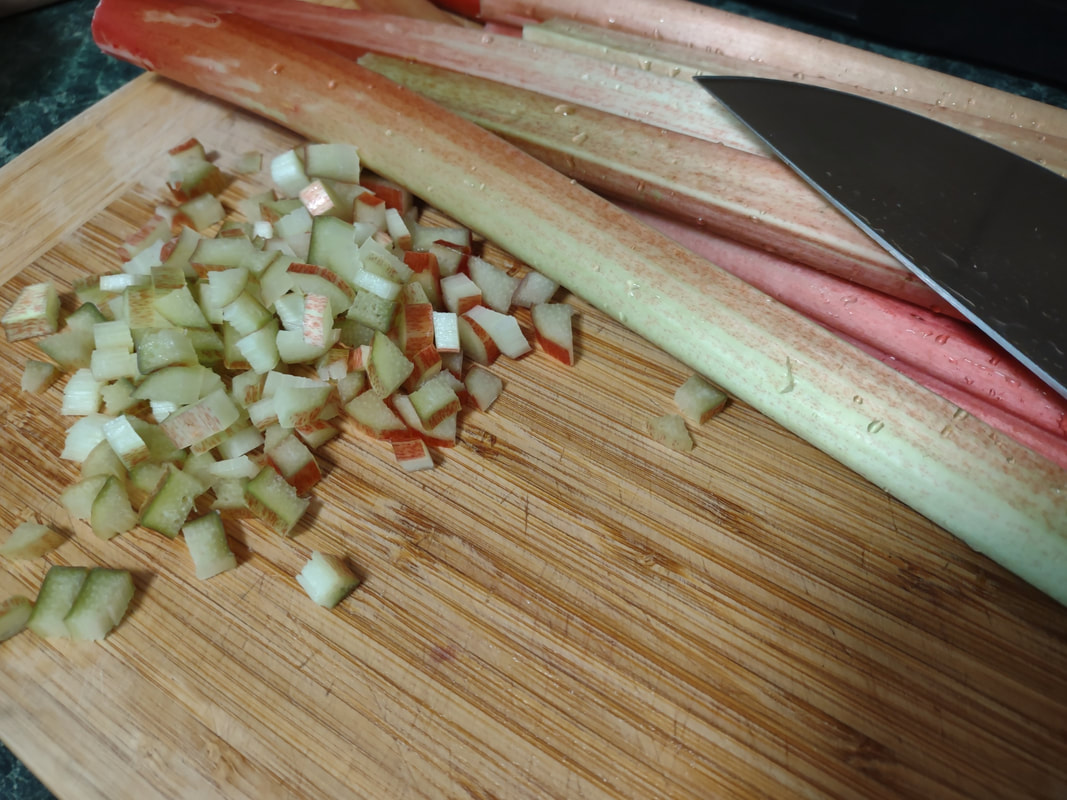
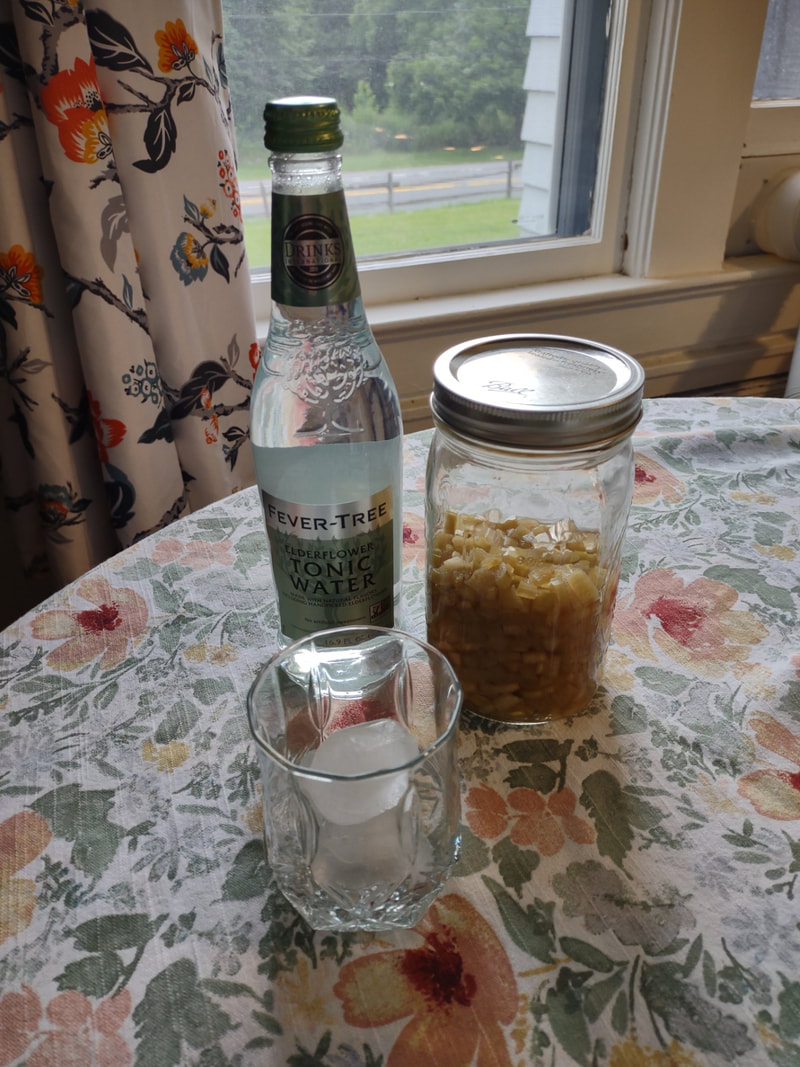

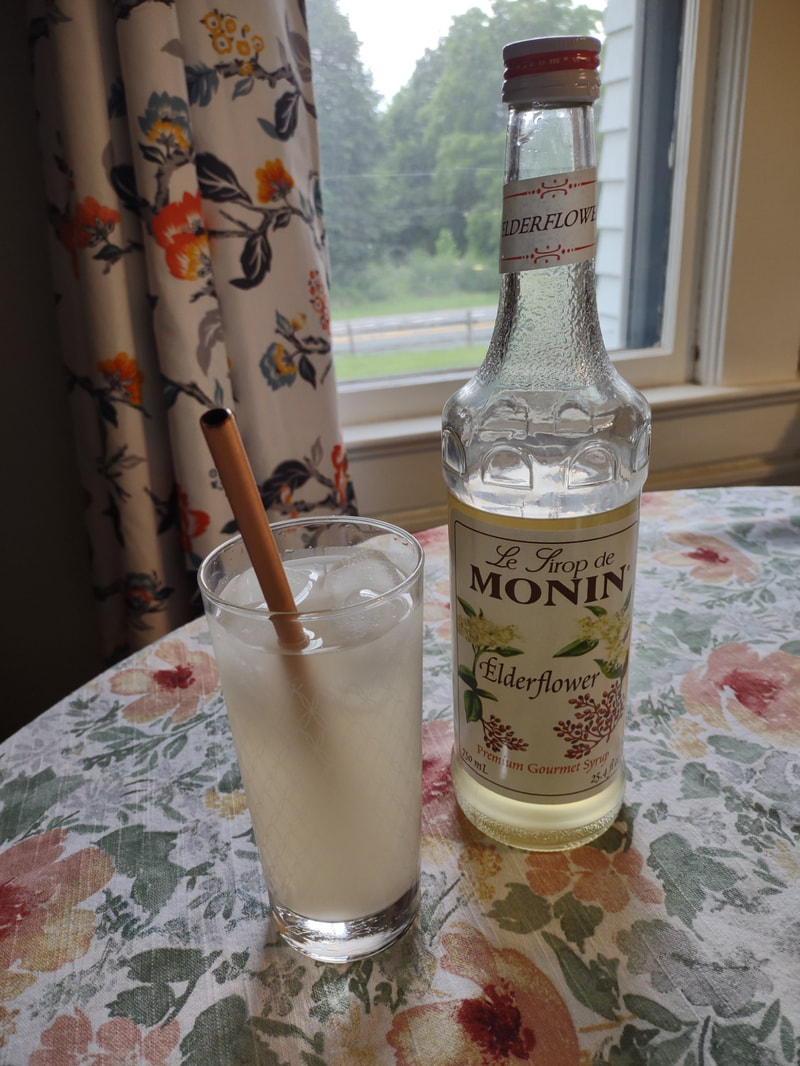
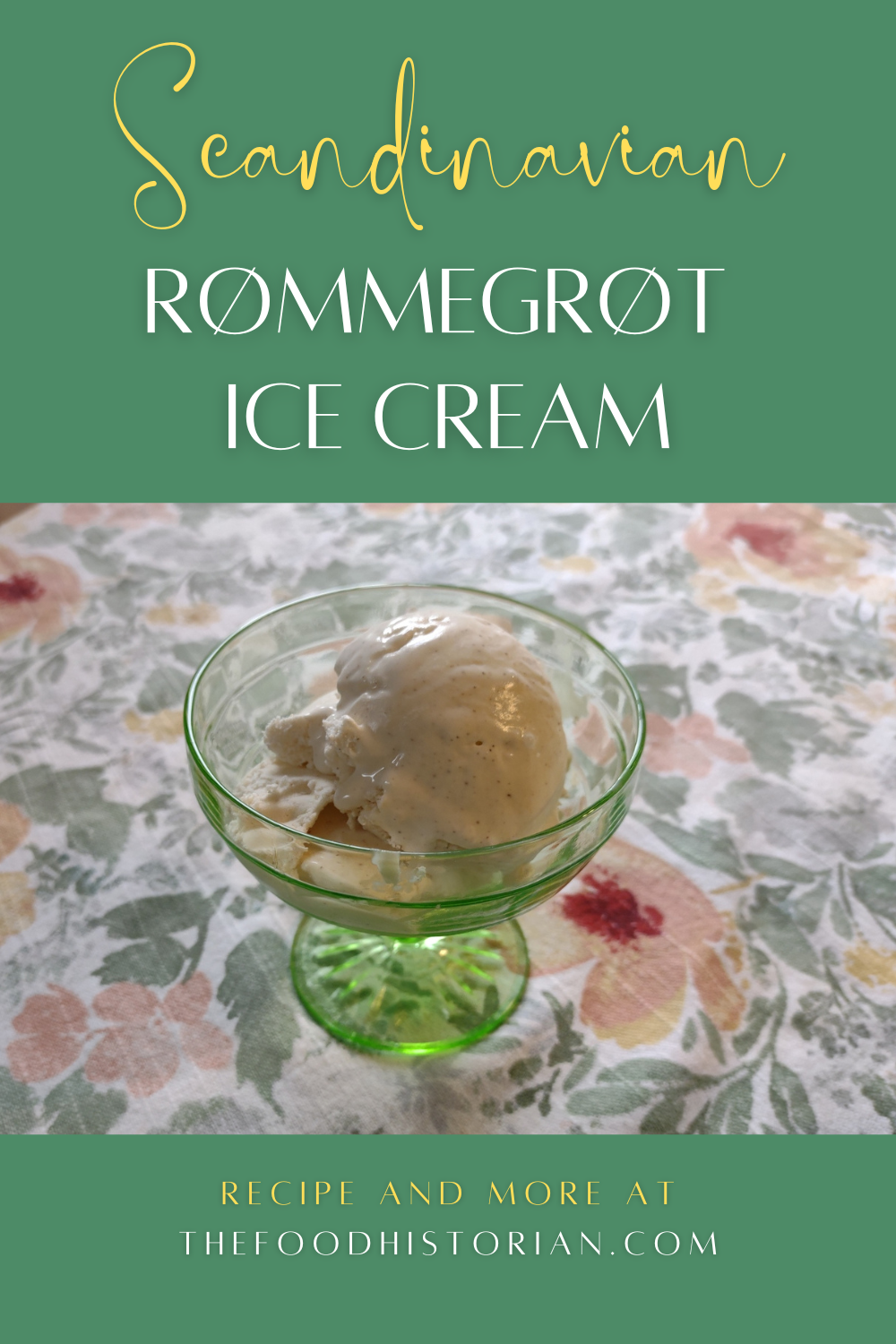
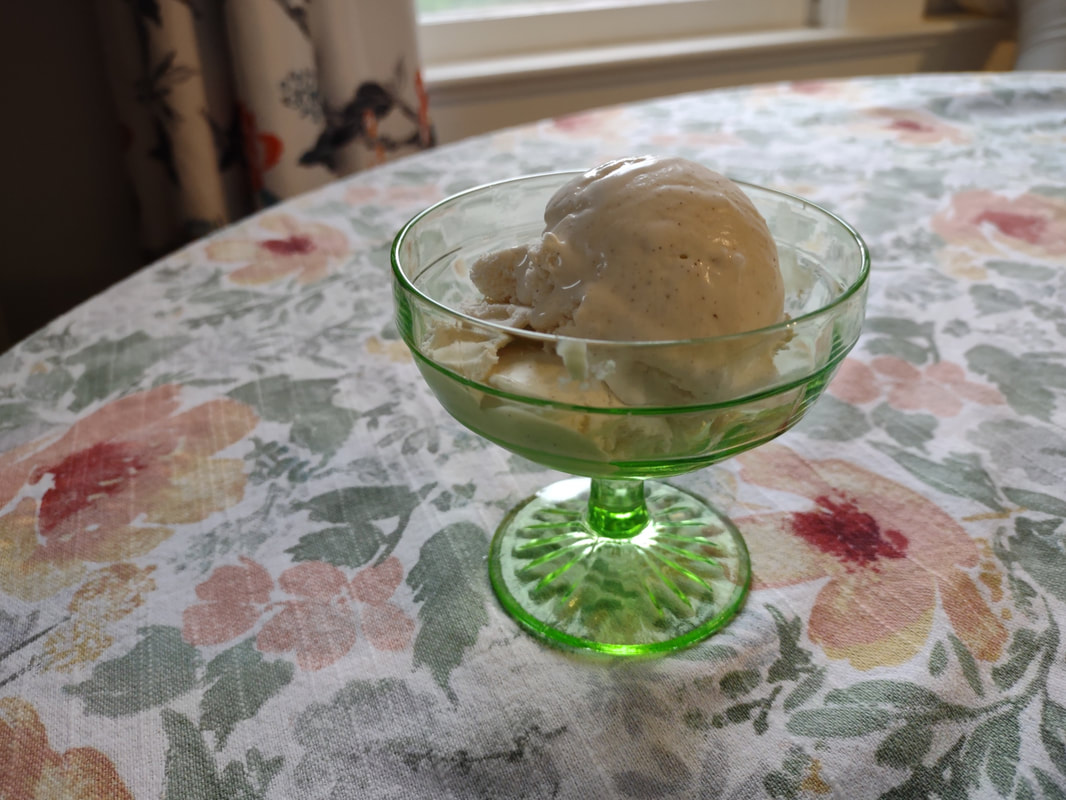


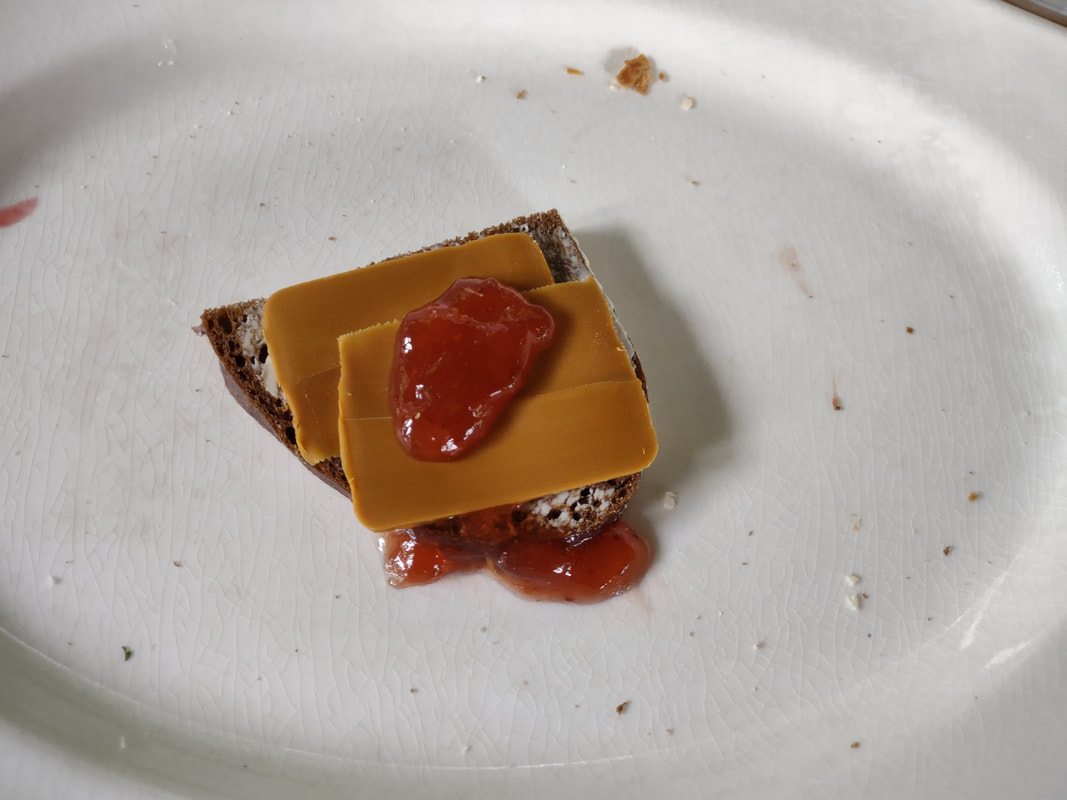

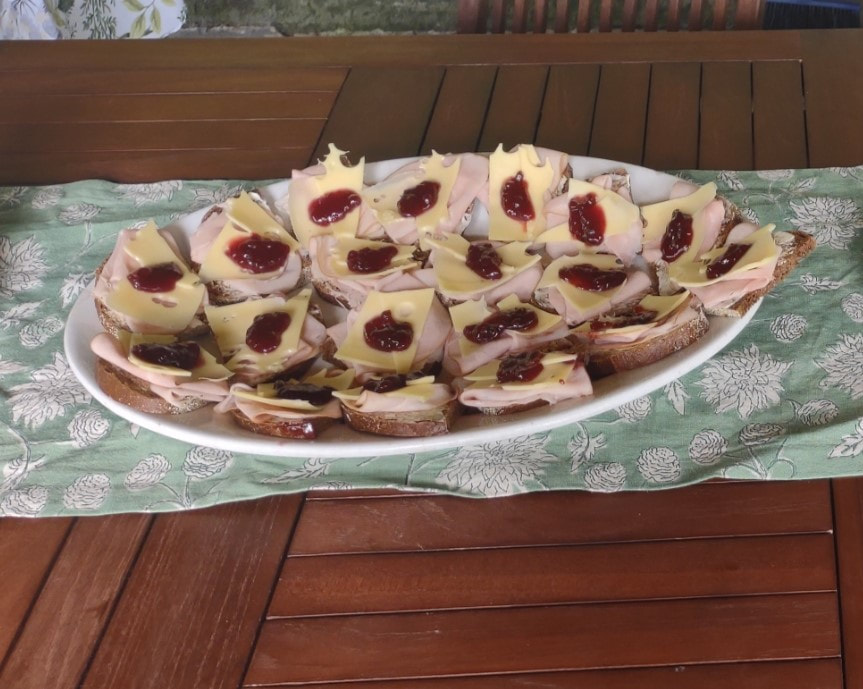
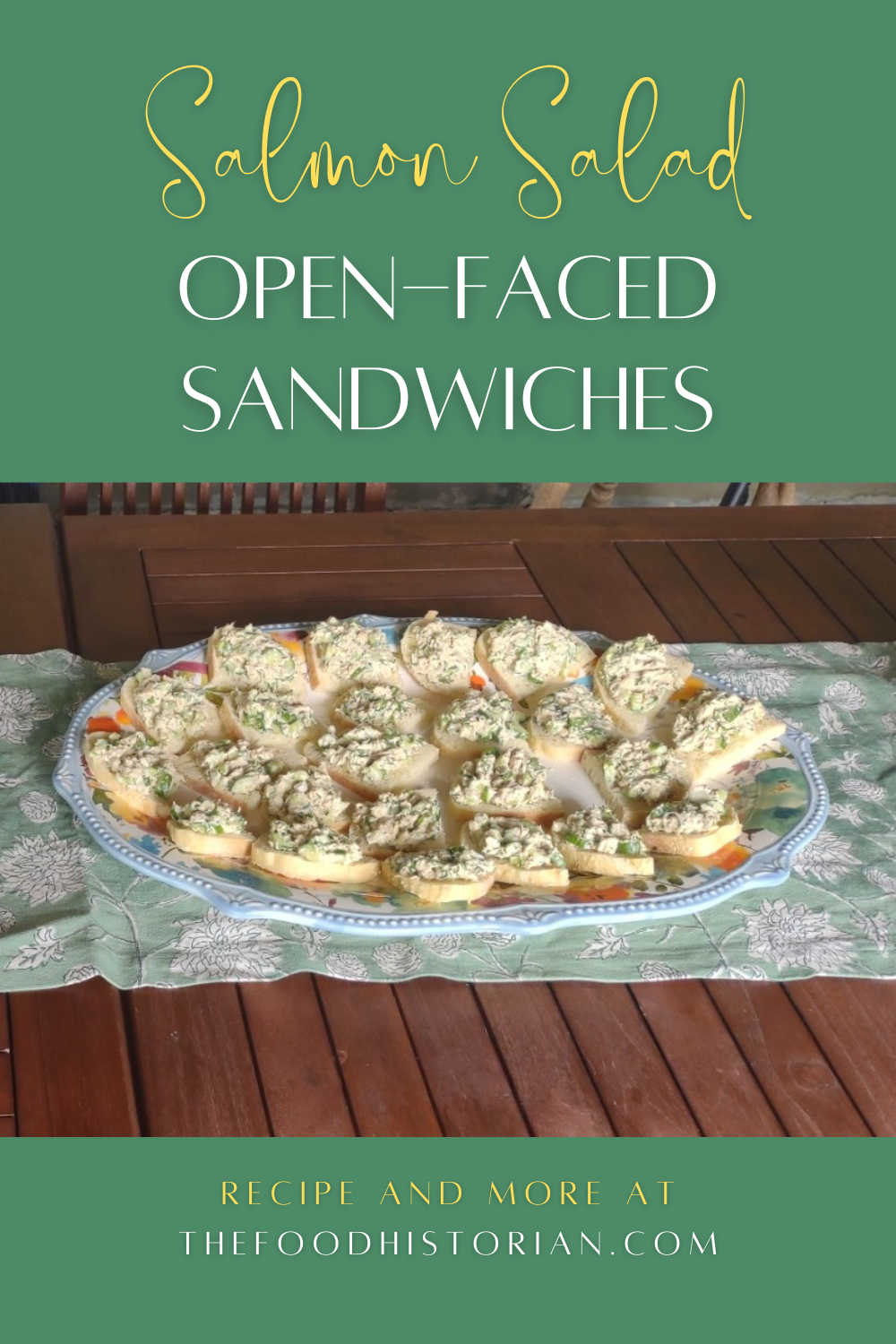


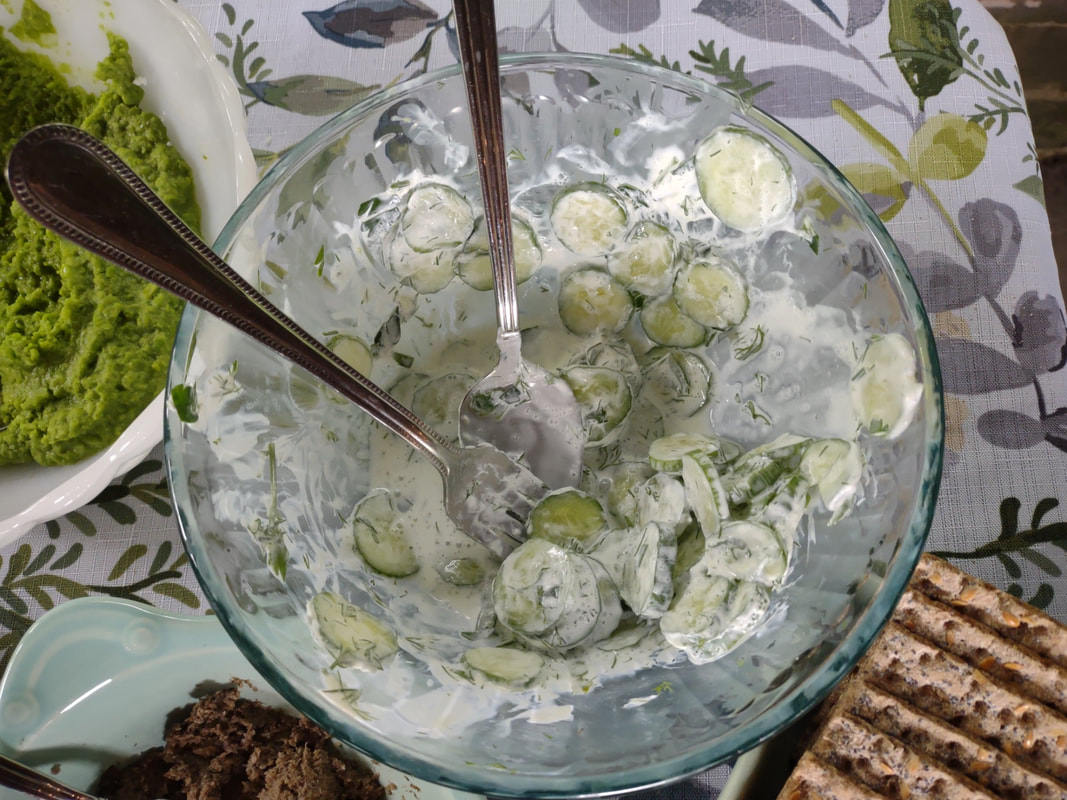
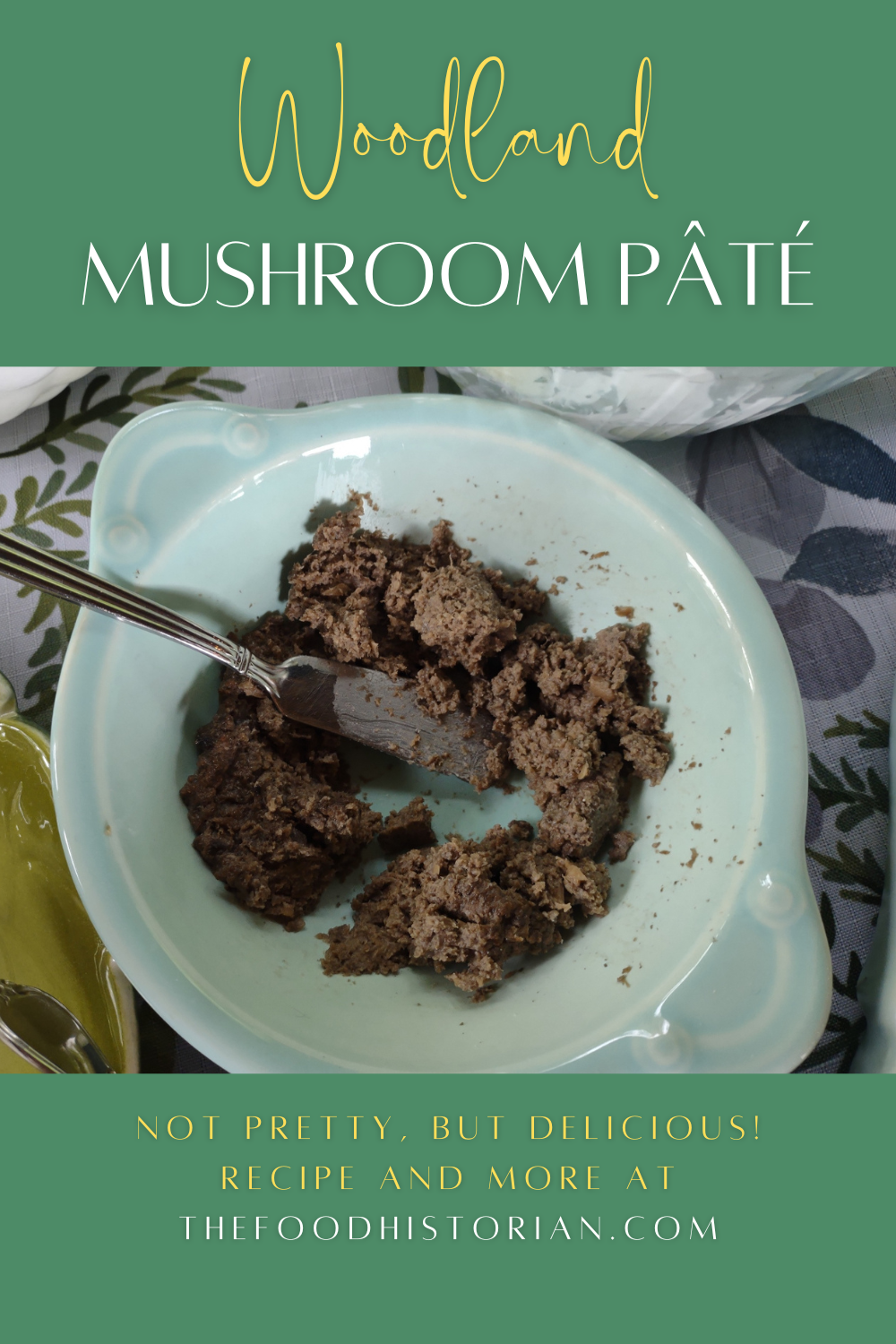
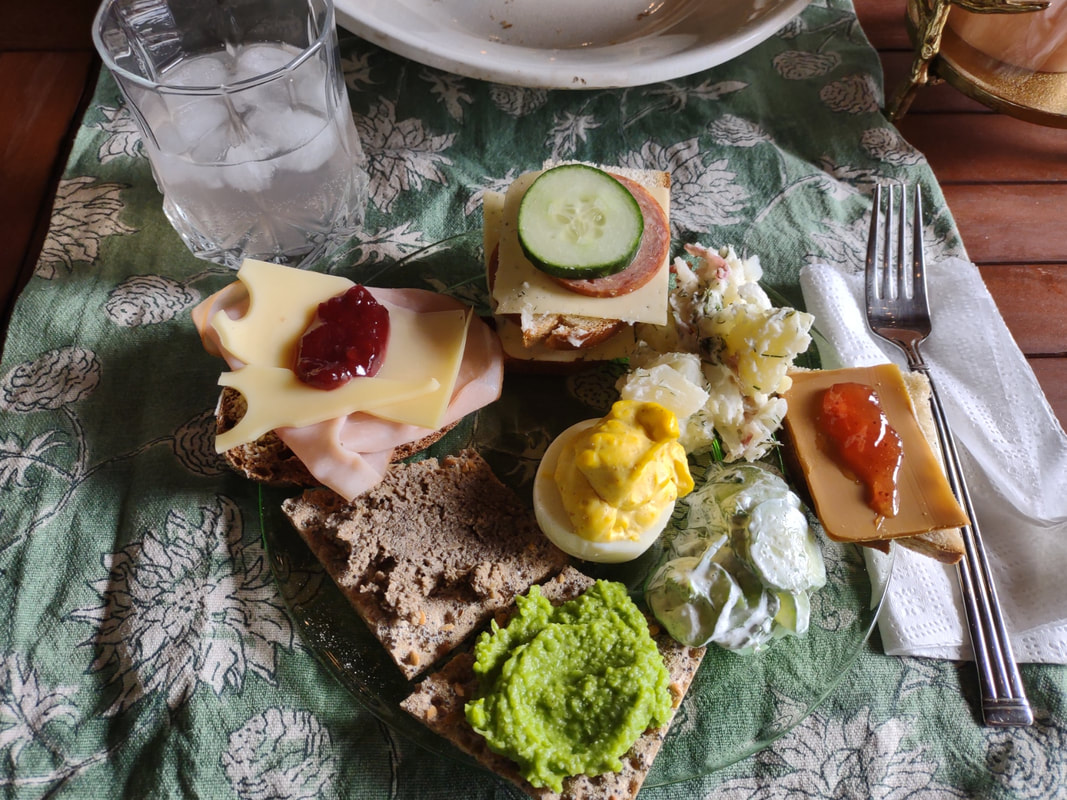
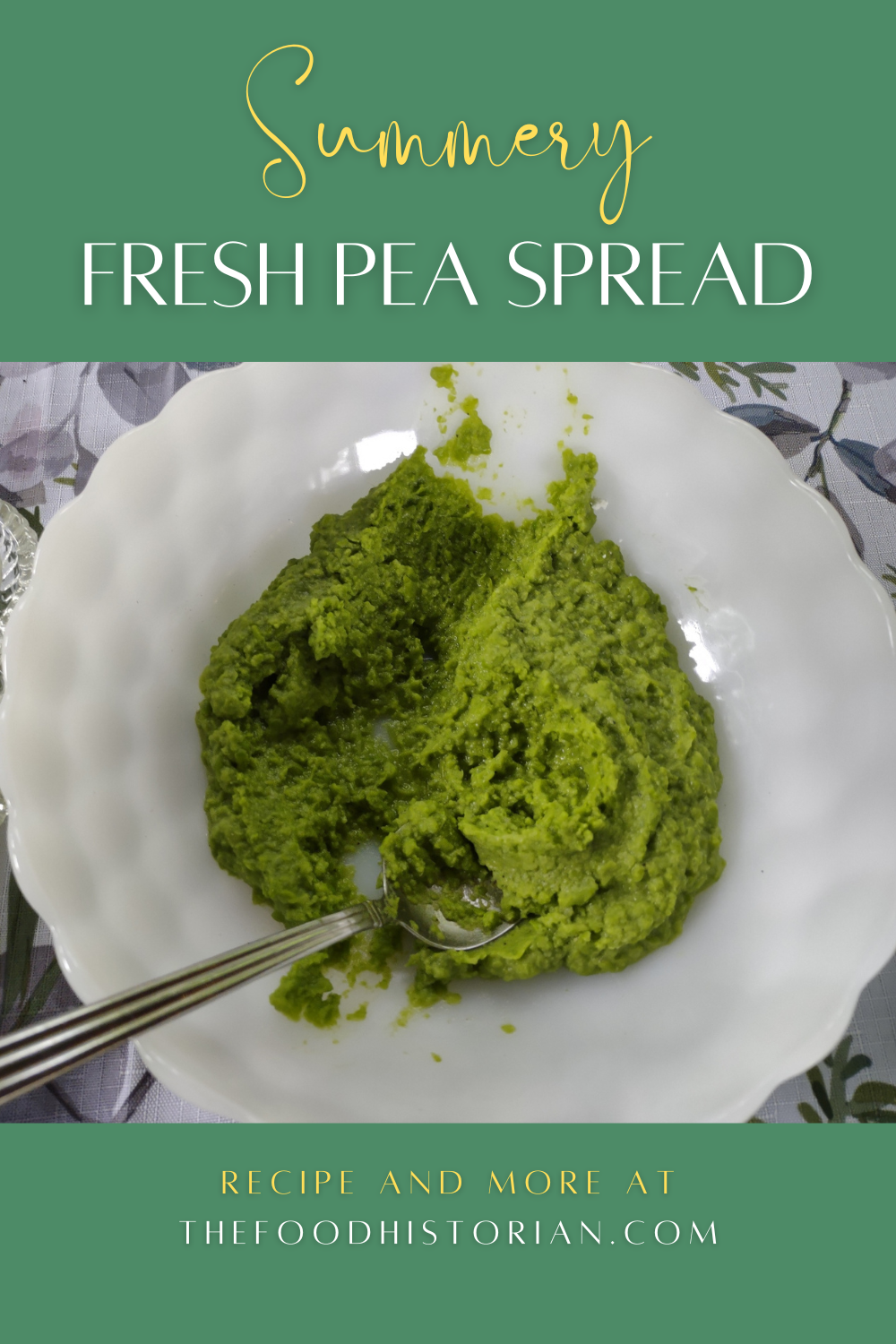
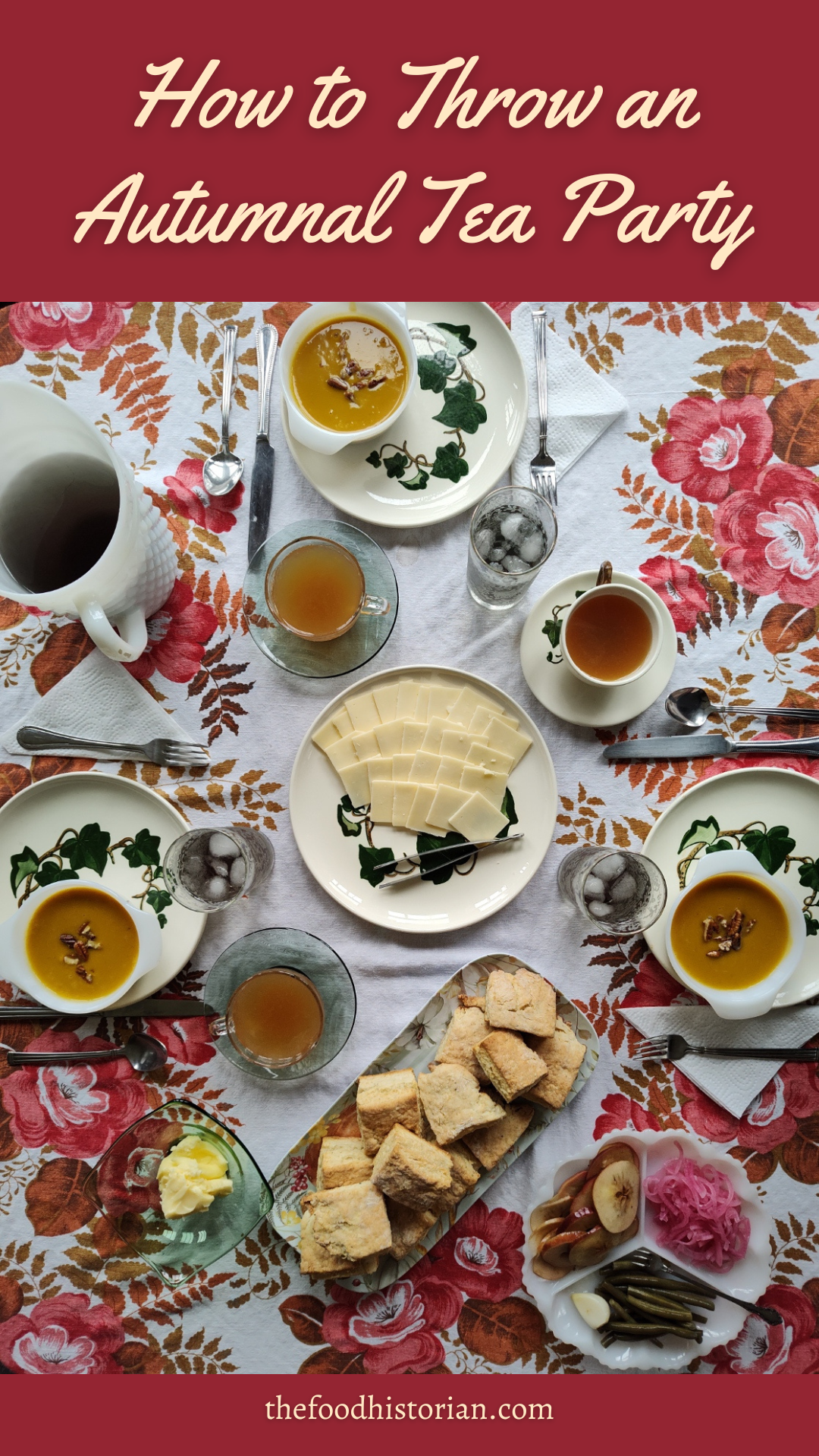
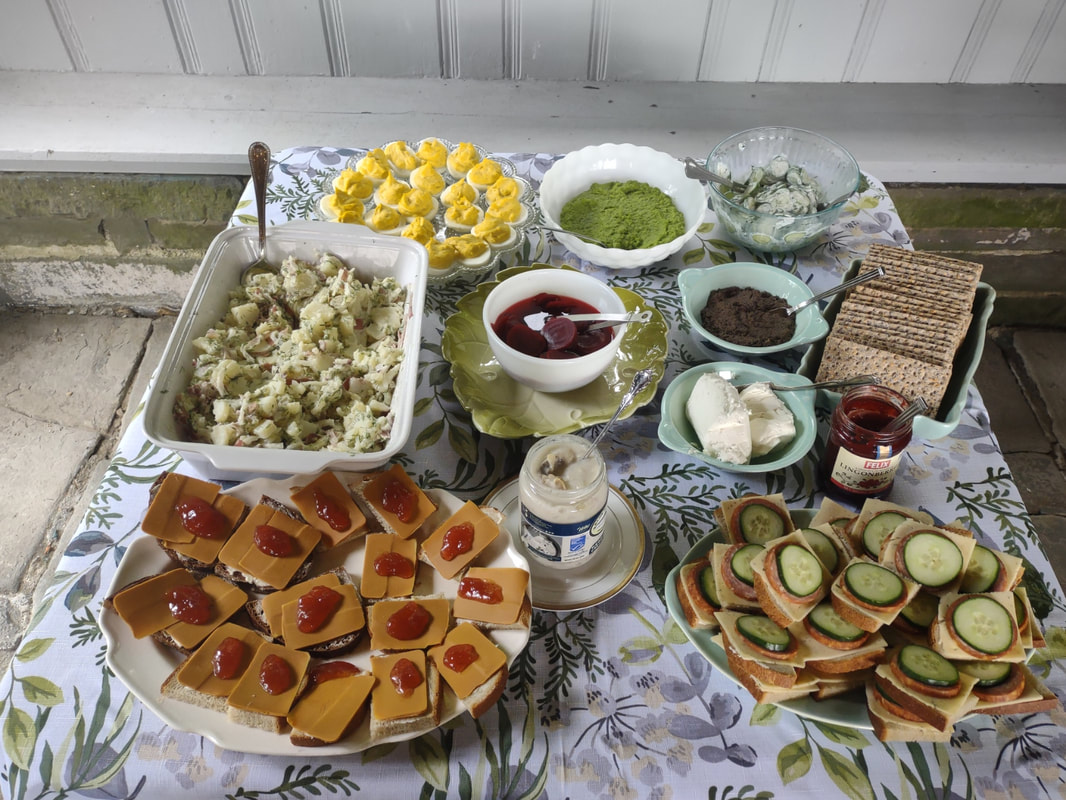
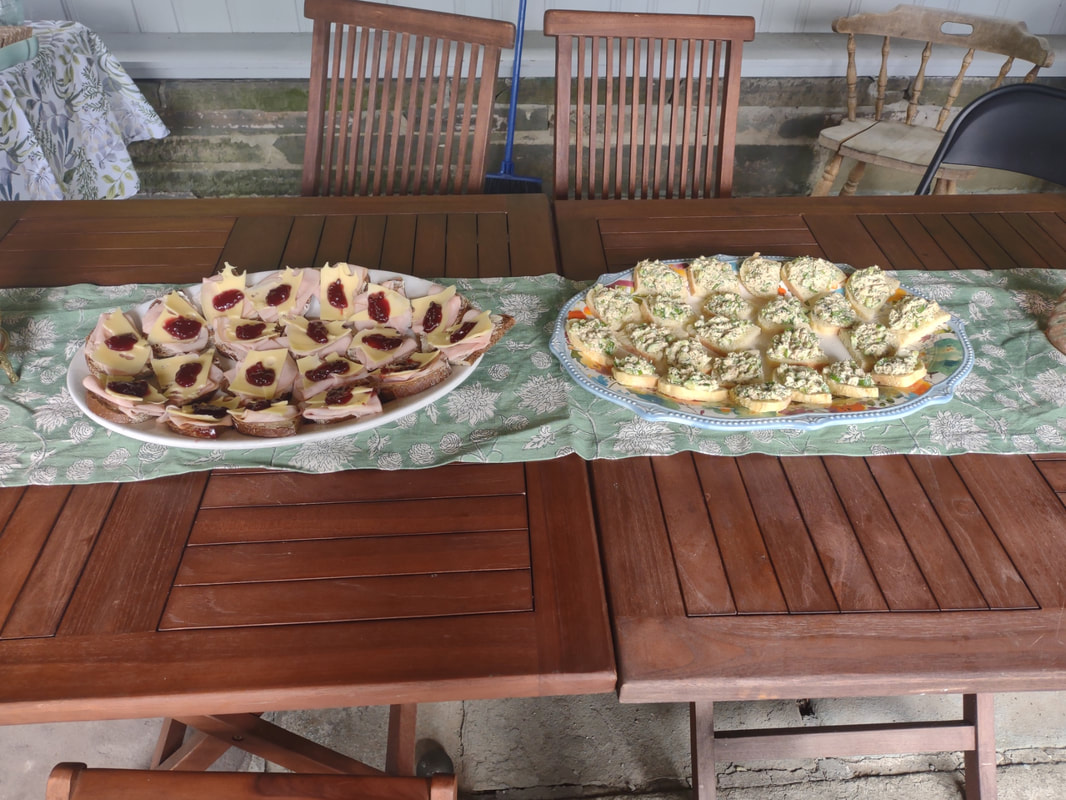

 RSS Feed
RSS Feed